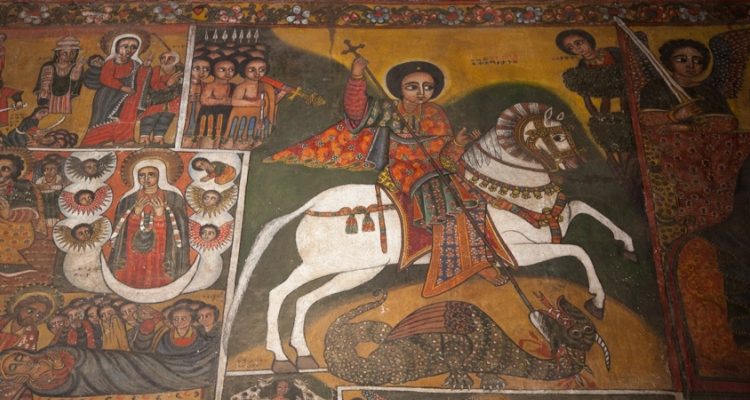Ethiopia is an African country that is located in the North East region of the continent. Its borders are Kenya to the South, Somalia to the East, Eritrea to the North, South Sudan, Sudan, the West, and Djibouti. It has Addis Ababa as its capital city. It is believed to have the second-largest population in the continent.
In Ethiopia, spiritual healing techniques are still practiced in this 21st century, where there is advancement in the medical fields. They still believe that health conditions refer to the balance between the body and the external body organs. Skin infections are believed to be caused by excess exposure to the sunlight, while sexually transmitted infections are due to urinating during the full moon. In this country, young children who suffer from diarrhea are usually treated by removing lower incisors. Cupping is done to treat chest pains (Chiatti, B. D, 2019). Neurological disorders in older people are treated through the process of bloodletting. This is because some of these infections usually face physical constraints during the treatment and prevention of these infections. The majority also do not understand the essential facts about the infections’ causes, thus controlling a burden.
In most Ethiopian families, the female population does not have the obligations and legal rights of having conversations with men who are part of their family or do not have any association with the family they are coming from. The communities in this country still hold the culture of the extended family tree where the grandparents are supposed to live with the rest of the whole family when their ages exceed the point at which they can not take care of themselves (Alehegne, M, 2011). After marriage, the siblings are allowed to stay around the family to offer support to any family member whenever the need arises. In Ethiopia, families are given priority.
In Ethiopia, parents have a strong passion for raising their children based on society’s culture and religious norms, and beliefs. The family heads have been entirely responsible for offering their children lessons concerning the necessary responsibilities and family values. This ensures that the children, as they grow, they become responsible and full-supportive parents. The young ones and their mothers always stay in rural homes as the fathers and other older children are moved to urban centers searching for employment opportunities (Sereke-Brhan, H, 2010). In a scenario where all the parents are employed in the cities, the grandparents stay back with them while they employ servants to do daily chores. At the age of five years, children are enrolled in public school for formal education. When a child misbehaves in the family, the Ethiopian parents believe in physical punishment as the best mode of correcting their children.
Ethiopians believe that most of the infection such as HIV & AIDS, anemia and vitamin deficiency was brought about by the western civilized white population migrating from the Arab, Europe, and other Western countries as they move to their various destinations. Epilepsy and mental illness are associated with evil spirits in Ethiopia. Therefore, when a family member gets infected or contracts these kinds of disorders, the rest of the family keeps the information and becomes cagey due to the fear of being associated with curses (Sereke-Brhan, H, 2010). Therefore, these families should be enlightened about the essence of taking their patients to the hospital for modernized modes of treatment, and counseling services should also be offered to them to avoid these stigmas.
Burials in most Ethiopian families are marked with rituals, prayers and gatherings, and religious traditions (Chiatti, B. D, 2019). The corpse is always sacramnedted by the religious of the society, after which the rest of the community mourns their departed member as a sign of showing their last respects. Women always cut their hair short or wear black clothes for the rest of the year.
The Ethiopian diets are mainly composed of cereals, root crops, and tubers. Despite livestock in these countries, their consumption is relatively low except among the nomad communities where milk forms the largest proportion of their diet. The environmental factors such as frequent droughts and constant human conflicts contribute a lot to the country’s prevailing food insecurity (Seeman, D, 2015). Therefore, the supply of energy for dietary complementation is insufficient to cater to the large population’s needs, making the majority of the population face malnutrition conditions. Additionally, food supply lacks diversity as the quantity supplied is not enough to sustain the whole population.
A large percentage of the population loves Ethiopian foods, and they are less common cuisine compared to American or Italian. For certain delicacies such as Awaze tibs meal, it is prepared for collaborative consumption rather than personal feeding. This food contains proteins, dietary fiber, potassium, carbohydrates, sodium, cholesterol, and fats. These nutrients boost the immune system of the body.







